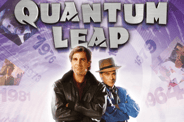A few weeks ago, I wrote about telling your company’s story, using VibrAlign’s example of delivering a message that conveys value and engages customers and employees. Once you’ve created your company’s story, what can you do with it? The power of a good story can be deployed to great effect both internally and externally.
Working with companies of all stripes, I’ve seen leaders use stories to invigorate employees and clarify their mission. If your team doesn’t have a clear, compelling vision of what your company is about, it’s much harder to inspire them to give their best and push together in pursuit of a common goal. A good story gives context and meaning to employees’ experience.
Case in point: In the early days of America’s space exploration, President John F. Kennedy was visiting NASA headquarters when he met a staff janitor. When Kennedy asked the man about his work, the story goes, the janitor replied, “I’m helping to put a man on the moon!” Talk about a man who knew his employer’s mission and, more importantly, believed he was part of it.
You also can use your story to rally external partners. VibrAlign’s movement is to realign America, one machine at a time. That seems like a lofty goal, yet it’s the movement to which they are deeply committed.
At entreQuest, we’ve seen first-hand how you can leverage leaders’ passions to build a movement others will join, even if that mission is not tied to producing revenue. Let me emphasize here that a movement isn’t about collecting credit for good deeds. The most effective movements look outward, pulling people together to make something better in the world.
About 10 years ago, I joined with three partners to create the b4students Foundation, with the aim of improving our city’s high school graduation rate. For me, this was personal. I attended a Baltimore City high school where just 20% of my classmates graduated, yet I was fortunate enough to earn a degree from Johns Hopkins University. So education is something I am absolutely passionate about.
Once you’ve identified your passion, crystallize the problem you want to address. Be as specific as possible. Next, identify obstacles. This is where many organizations get off track. For any given societal problem, you can find 10, 20 or even 50 contributing issues, and it’s easy to lose focus in a well-intentioned, but impractical, effort to fix everything.
Education is no exception. We identified obstacles ranging from insufficient funding to lack of teacher support. We focused on mentoring. We created a workplace-based mentoring program to support students through their high school careers. Eight companies agreed to make the four-year, once-a-month commitment to more than 100 kids. The outcome was that 98% of those students earned diplomas.
One reason b4students succeeded was our laser focus on our call to action. We told companies they had three ways to get involved: Join the program, speak to our students, or write a check. Often, the call to action is what separates movements that flourish from those that putter along and peter out.
That’s not to say building a movement is easy. Thirty-seven companies told us “No” before one said “Yes.” We also accepted that companies had their own reasons to join our cause. Some shared our passion for education, but others simply saw the benefit of good PR. Regardless, if they were willing to give us 100%, we welcomed them.
That was our experience in starting a movement, and it’s very different from VibrAlign’s movement. Your company’s will be something else entirely. The important thing is to tell your story, find your passion and build upon those two pillars to create something even bigger. You might be surprised at the momentum you can create.
Joe Mechlinski is the CEO of entreQuest and has partnered with countless leaders to effectively improve their team’s performance, their clients’ experience, and their company’s profits.







